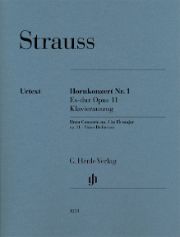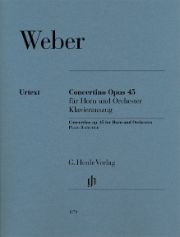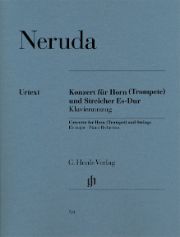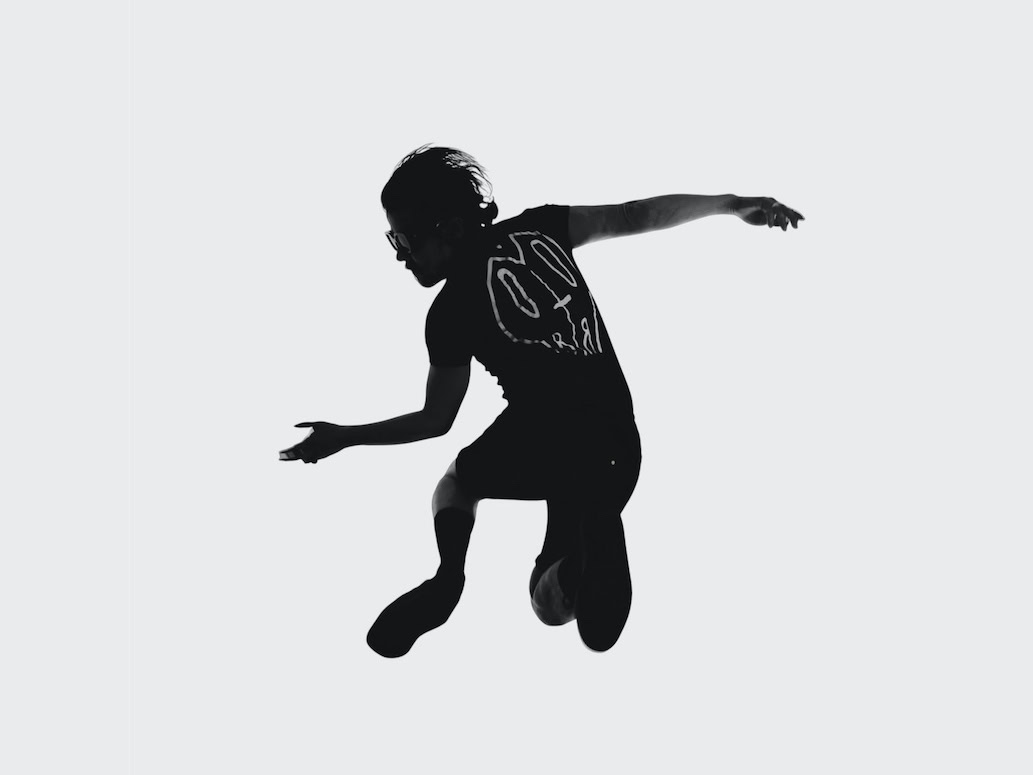New editions of standard works
Compositions for horn with orchestra or piano by Richard Strauss, Carl Maria von Weber and Johann Baptist Georg Neruda have been published by G. Henle.
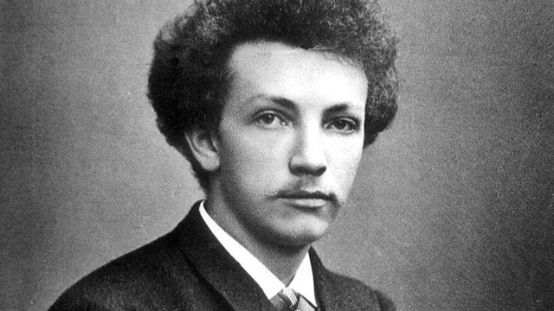
The fact that Richard Strauss assigned central roles to the horn in all his orchestral works and operas can certainly be explained by the fact that he had been familiar with the sound of this instrument since his childhood. His father Franz Strauss was principal horn in the Munich court orchestra and at that time one of the most outstanding representatives of French horn playing. The 18-year-old composer therefore first wrote this horn concerto in the version for horn and piano for his father, who was no longer able to perform it for reasons of health and age. After completing an orchestral score, the conductor Hans von Bülow, a great patron of the young Strauss, took an interest in this work. In the printed edition of the orchestral version, Richard Strauss dedicated the Horn Concerto to Oscar Franz, the first horn player of the "royal musical orchestra" in Dresden and himself the author of a teaching work that is still in use today, the Great theoretical-practical French horn schoolwho played it in Dresden. The present edition, including the preface, was supervised by Peter Damm after meticulous source studies.
For his parents' silver wedding anniversary on August 29, 1888, Richard Strauss wrote the Andante C major for horn and piano op. posth., which dates from the period of the first symphonic poems Don Juan, Macbeth and Death and transfiguration and brings out the full tonal possibilities of the horn.
Playing three- or four-part chords on the horn by blowing a note and simultaneously singing it in a higher register, thus making other chord tones sound: a twentieth-century technique? This "showmanship", as critics complained at the time, was already used by horn virtuosos in the classical period. It is demanded of the players in Carl Maria von Weber's Opus 45, along with mastery of other technical caprices. One should not even think about the fact that the composer, who did not like valve horns, wrote this work for the valveless horn that was in use at the time. Weber composed this Concertino E minor for the horn player of the Munich court orchestra Sebastian Rauch. He also wrote further solo concertos for the wind soloists of this orchestra: "... the whole orchestra [is] the devil and wants concertos from me."
Benda, Koželuh, Dussek and Neruda were the leading Bohemian composers in eighteenth-century Europe. After leaving his homeland, Johann Baptist Georg Neruda worked as a violinist in the Dresden court orchestra, where he met the outstanding horn players Hampel, Houdek and Knechtel, all of whom came from Bohemia. He wrote his horn concerto for the latter. Johann Georg Knechtel, who also wrote a horn concerto, concentrated his playing mainly on the high registers of the instrument. However, he had to give up his work as a horn player relatively early on, perhaps for this reason, and continued to be employed as a violoncellist. The solo part of Neruda's horn concerto is also in extremely high registers, and the piece will probably still be performed by very few horn players today. Fortunately, however, the publisher includes a trumpet part.
Richard Strauss: Horn Concerto No. 1 in E flat major op. 11, edited by Peter Damm; piano reduction by Johannes Umbreit: HN1253, € 20.00; study score, HN 7253, € 17.00
Richard Strauss: Andante in C major for horn and piano, edited by Dominik Rahmer, HN 1332, € 12.00
Carl Maria von Weber: Concertino in E minor op.45 for horn and orchestra, edited by Dominik Rahmer, piano reduction by Johannes Umbreit, HN 1179, € 15.00
Johann Baptist Georg Neruda: Concerto for horn (trumpet) and strings in E flat major, edited by Dominik Rahmer, piano reduction by Christoph Sobanski, HN 561, € 15.00
All editions: G. Henle, Munich






